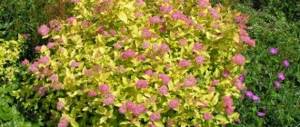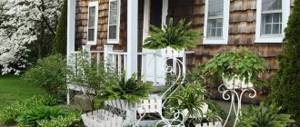Astilbe is a plant loved by landscape designers and gardeners. Growing an astilbe flower, planting and caring for it in open ground is not particularly difficult even for inexperienced gardeners. And the carved foliage of astilbe and the elegant panicle inflorescences of the plant can decorate any garden. In addition, the flower is very unpretentious, decorative throughout the season and prefers shady places.
Types and varieties of astilbe for the garden
Wild astilbe species are found in North America, Japan, the Himalayas and China. In our country, the flower grows in the Far East.
The plant belongs to the Saxifraga family, the genus has only about 40 species, but only 10 species are used in ornamental gardening and landscape design. Astilbe varieties are divided into:
- dwarf (height from 10 to 30 cm);
- short (from 30 to 60 cm);
- medium-sized (60-90 cm high);
- tall (90-150 cm).
In addition, astilbe varieties differ in flowering time: early ones bloom in June, medium-sized plant varieties bloom closer to mid-summer, and late-flowering hybrids bloom at the end of summer.
Most modern varieties were created by the German breeder Georg Arends. A whole group of complex hybrids, obtained as a result of crossing with David’s astilbe, bears his name. These are tall perennial rhizomatous plants, the height of the bush reaches 1 m. Among the varieties of Arends' astilbe, one can distinguish Amethyst, Anita Pfaifer, Gloria, Spinel, etc.
Astilbe sinensis has shiny openwork leaves covered with reddish hairs. In culture, Chinese astilbe began to be used in the mid-19th century. Among the varieties of this species are Vision in Pink (pink astilbe), Vision in Red (red inflorescences), Purpurlanze (purple flowers).
Astilbe Thunberg has large racemose drooping inflorescences. The flower of the Red Charm variety, Professor Van der Wiel, is very beautiful.
The Korean astilbe hybrid has light green leaves and spectacular drooping inflorescences. Japanese astilbe has spreading bushes and flowers with a pleasant aroma. Among the exquisite varieties of astilbe simplefolia are Straussefender with coral-colored inflorescences and Praecox Alba with snow-white flowers.
Description of the species
Astilbe is an ornamental plant.
Astilbe is an ornamental garden plant, translated from Greek as “very shiny”; the flower received this name for the color of its leaves. Under natural conditions, astilbe can be found in China, North America, and Japan in forests and along the coastline.
The stems are erect, their height varies from fifty centimeters to two meters. Astilbe leaves are distinguished by their delicacy and color from light green to reddish.
The flowers are small, collected in paniculate, pyramidal inflorescences. Astilbes are characterized by flower colors: white, pink, red, burgundy, crimson, purple. Plants are classified into several types based on the structure of leaves, inflorescences and height.
Planting in open ground
In nature, the plant grows in places with constantly moist soil: on river banks, in deciduous forests, in mountainous areas. Therefore, it is preferable to choose a corner in partial shade with moisture-absorbing soil, where astilbe will grow well.
The plant is planted in open ground in May - early June. First you need to carefully dig up the area and select the roots of the weeds. After this, you need to fertilize the ground with humus, compost or high-moor peat (2 buckets per 2 m?). After planting the plant in such a substrate, there will be no need to fertilize for a long time.
Prepare small holes about 20 cm deep. If you are planting several rhizomes, then place them at a distance of at least 40 cm from each other, since the bushes grow quickly.
Place 1 tbsp at the bottom of each hole. l. wood ash. If the soil on the site is not moisture-absorbing enough, then add a handful of hydrogel, which will help retain moisture in the substrate.
Place the astilbe rhizome in the middle of the hole and cover it with nutrient substrate so that its layer is about 5 cm. If the plant begins to grow, then plant it so that the sprouts look above the soil surface. Water the plantings and mulch with sawdust, compost or peat. This mulch will help retain moisture in the soil, which is very good for the development of astilbe.
Reproduction
Growing astilbe from seeds
The flower propagates well by dividing the bush.
To do this, dig up the plant, cut off part of the rhizome with a shovel, and transplant it to a new location. Astilbe also reproduces by shoots, while young shoots with a small root are dug up and split off from the main bush and planted in a new place.
You need to know this: there are special growth and development stimulants that effectively help the plant settle in a new place. These drugs include: heteroauxin, rootin, super root.
The plant can also be grown from seeds at home. Seeds are planted in March in specially prepared soil for seedlings, on compacted moist soil, mulched with soil on top, covered with a transparent film or lid and placed in a well-lit place. A week later the first shoots appear.
At this stage, you need to water in a tray so that drops of water do not break the young shoots. After the first pair of true leaves appears, the astilbe is picked and transplanted into containers 6-7 cm deep. At this stage, organic and mineral fertilizers can be introduced once a week, it is advisable to alternate the preparations.
Seedlings are planted in the ground in early June. To avoid excessive thickening, maintain an interval of 30-40 cm between plants.
Planting astilbe rhizomes
Please note: it is better to purchase soil for astilbe seedlings in a specialized store, but it is important to look at its composition. A good balanced mixture should contain vermicompost, humus, peat, sand, and a complex of mineral fertilizers.
Care
Astilbe is a very unpretentious plant. Caring for it comes down to weeding while the flower is still small. Subsequently, when the bush has grown sufficiently, the need to weed the planting will no longer be necessary. The clumps are so dense that weeds cannot grow through them.
All varieties of astilbe require a large amount of moisture. The plant needs regular and abundant watering. During dry periods, water in the morning and evening, and to ensure less moisture evaporates, carefully mulch the plantings.
Inflorescences can be removed after flowering, although this is not necessary. Dried panicles are beautiful and can decorate a flower garden until frost. In October, foliage and stems must be cut off at soil level and the rhizomes covered with mulch. This will help protect the flower rhizomes from freezing. Young astilbe plantings can be additionally covered with spruce branches, but adult plants do not require such cover.
Experienced gardeners recommend rejuvenating astilbe plantings every 5 years. This can be done both in spring and autumn. The bush needs to be dug up and the rhizome divided into small sections. The plant tolerates replanting very well and blooms the next year.
Growing conditions and care
Astilbe shade-loving perennials
Astilbe is a rather unpretentious plant, but it is important to know some of the features of its cultivation.
Initially, this plant is moisture- and shade-loving, although with the development of new varieties, astilbe acquired the ability to grow on drier soils. But still, it is necessary to select a place for it, excluding direct sunlight and drying out soils (you can read about other shade-loving perennial flowers here).
Astilbe grows well and forms dense thickets. Grows in one place for up to 15 years. But at the same time, it is important to periodically thin out the area once every 4 or 5 years. For abundant flowering in spring, astilbe is fed with a universal mineral fertilizer that contains nitrogen, potassium, and phosphorus. After flowering, the inflorescences are cut off.
Preparation of perennials for winter begins at the end of August; it is during this period that phosphate fertilizers are applied, which help the plant prepare for the winter period.
This is important: in order to protect young astilbe bushes from frost, it is better to cover them with spruce branches or non-woven material.
Astilbe in landscape design
The flower is very often used in landscape design. The plant looks great both as a tapeworm and in a group planting. Low-growing species can be planted on an alpine hill, placed in the foreground of a flower garden, or planted along paths. Tall varieties can be used in group plantings and as a green hedge.
The flower fits well into the garden design in combination with coniferous plants, for example, junipers or thujas. Ferns, bergenia, hellebore, Rogersia, hosta and mantle will be excellent neighbors for astilbe in landscape design. All these plants have spectacular foliage, grow well in shady corners of the garden and develop well in the absence of sunny color, like astilbe. Plantings can be supplemented with beautifully flowering plants. The astilbe flower is planted next to geraniums, phlox, daylilies and aquilegia.
The plant fits into any garden style: landscape, formal or regular. It will complement a composition in a Chinese or Japanese style and will look appropriate in a Mediterranean or other themed garden. And thanks to its unpretentiousness, astilbe is a real boon for busy gardeners.
Description of the plant
Astilbe flower is a perennial plant of the Saxifragaceae family. Found naturally in North America and Asia. Astilbe is highly respected in the Land of the Rising Sun. It is part of the elegant floral arrangements that form an important part of the traditional tea ceremony.
In gardens there are hybrids formed from crossing varieties - Astilbe astiboides, Astilbe japonica, Astilbe thunbergii with the species Astilbe chinensis. Plants reach a height of 50-150 cm, have straight, rigid stems and double pinnate leaves, with serrated edges, leaf blades are wrinkled and pubescent. Thanks to its beautiful, feathery leaves, located on hard petioles and forming dense clusters, astilbe is decorative all season - from spring to late autumn.
Astilbe's most spectacular feature is its extremely decorative, tiny flowers, gathered at the top of a sublime, stiff stem in magnificent, paniculate inflorescences reminiscent of colorful feathers.
Flowers appear in summer - from July to September, depending on the variety. According to flowering time, varieties are divided into early, mid-early and late.
Photo gallery
We offer our readers 18 more photos of different varieties of astilbe, which are most often used in landscape design.
Types of astilbe and their features
Of the 40 species, only 10-12 are used for cultural breeding in temperate latitudes. A close acquaintance with them will help you make a more precise choice if you are planning to introduce astilbe into your garden.
Astilbe David is a common species, with a spreading bush shape and large pyramidal inflorescences. The plant has compound, feathery leaves with brown veins. Belongs to tall species (more than 1 meter in height). It blooms late, in July-August, and produces lilac, pink or purple-pink flowers.
Astilbe japonica is a small, compact species with white or pink flowers. It differs from other species in its shiny, ornamental leaves. It grows up to 80 cm, tolerates cold winters well and pleases owners with early flowering. Among its varieties, pink astilbe Rhineland and astilbe Montgomery stand out, producing fluffy burgundy-crimson panicles of inflorescences.
Astilbe japonica "Montgomery"
Using fresh astilbe flowers, you can create thematic decor, for example, for the now popular Provence style
Hydrangea and astilbe often coexist in the garden, and a bouquet made from them will also decorate any home
This flower will become a real decoration of the garden and a designer find in the yard.
Astilbe chinensis is a species of medium length (1-1.1 m), with large inflorescences (30-35 cm) and a beautiful arrangement of leaves. The varieties also include low-growing forms, not exceeding 25 cm in height. If you choose based on the beauty of flowering, then primacy should be given to the “Purpurlanze” variety, decorated with amazing lilac flowers. “Vision in Red” is no less delightful, with large dark purple panicles.
Hydrangea and astilbe are a perfect combination, and are especially good together in estates decorated in Victorian or classical styles.
Rich, deep color of astilbe Purpurlanze
Astilbe Arends is the most common species, valued by gardeners for its unpretentiousness and exquisite decorative qualities. Includes about 40 varieties, including Astilbe Gloria, with diamond-shaped dark lilac inflorescences.
Astilbe Arends is the most common and popular type
Bright flowering of astilbe Gloria
All varieties of astilbe are hybrids of the main species and carry their characteristic growing conditions. The rules for caring for the plant also apply to them.











